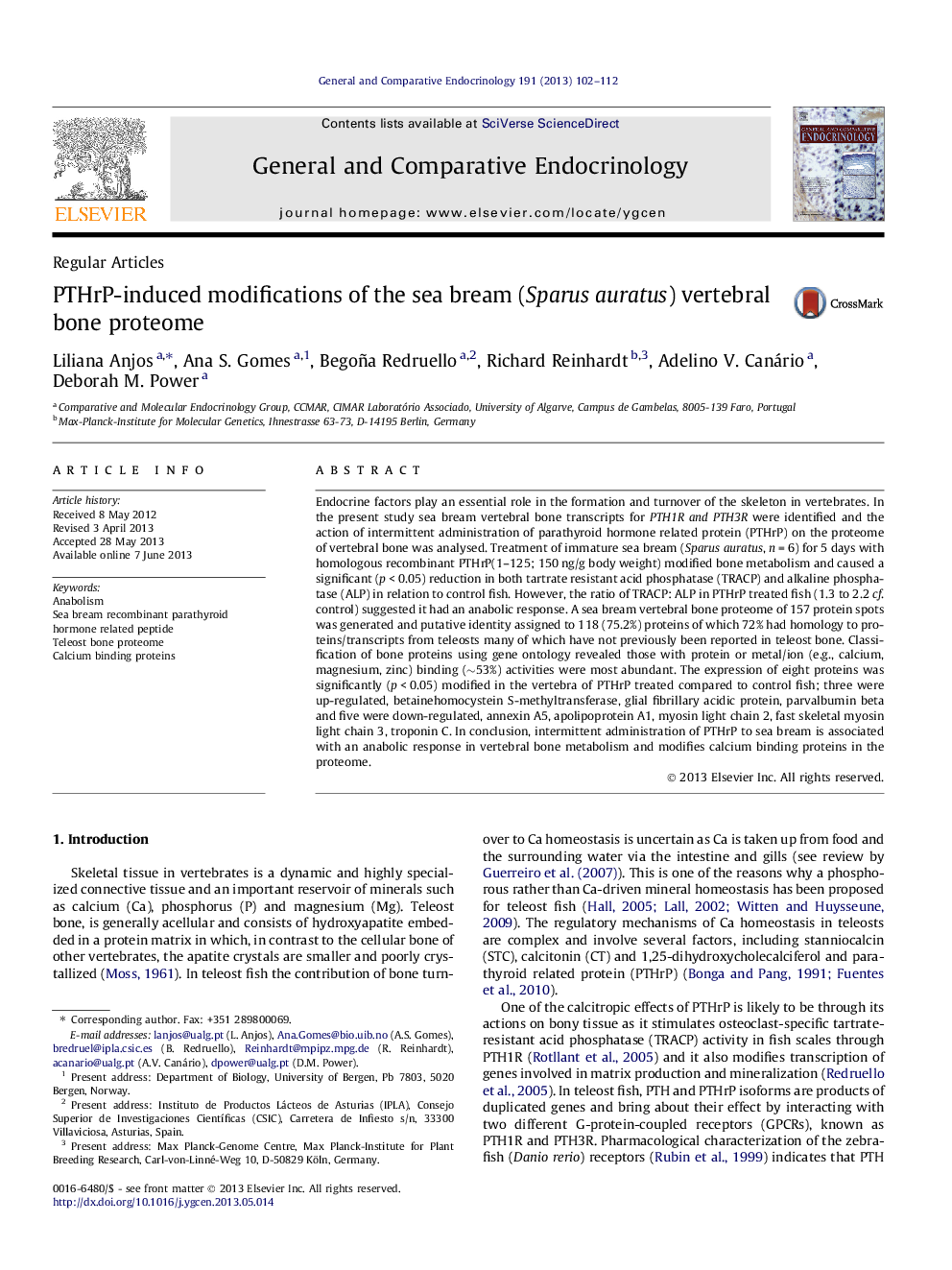| Article ID | Journal | Published Year | Pages | File Type |
|---|---|---|---|---|
| 5901231 | General and Comparative Endocrinology | 2013 | 11 Pages |
Abstract
Endocrine factors play an essential role in the formation and turnover of the skeleton in vertebrates. In the present study sea bream vertebral bone transcripts for PTH1R and PTH3R were identified and the action of intermittent administration of parathyroid hormone related protein (PTHrP) on the proteome of vertebral bone was analysed. Treatment of immature sea bream (Sparus auratus, n = 6) for 5 days with homologous recombinant PTHrP(1-125; 150 ng/g body weight) modified bone metabolism and caused a significant (p < 0.05) reduction in both tartrate resistant acid phosphatase (TRACP) and alkaline phosphatase (ALP) in relation to control fish. However, the ratio of TRACP: ALP in PTHrP treated fish (1.3 to 2.2 cf. control) suggested it had an anabolic response. A sea bream vertebral bone proteome of 157 protein spots was generated and putative identity assigned to 118 (75.2%) proteins of which 72% had homology to proteins/transcripts from teleosts many of which have not previously been reported in teleost bone. Classification of bone proteins using gene ontology revealed those with protein or metal/ion (e.g., calcium, magnesium, zinc) binding (â¼53%) activities were most abundant. The expression of eight proteins was significantly (p < 0.05) modified in the vertebra of PTHrP treated compared to control fish; three were up-regulated, betainehomocystein S-methyltransferase, glial fibrillary acidic protein, parvalbumin beta and five were down-regulated, annexin A5, apolipoprotein A1, myosin light chain 2, fast skeletal myosin light chain 3, troponin C. In conclusion, intermittent administration of PTHrP to sea bream is associated with an anabolic response in vertebral bone metabolism and modifies calcium binding proteins in the proteome.
Keywords
Related Topics
Life Sciences
Biochemistry, Genetics and Molecular Biology
Endocrinology
Authors
Liliana Anjos, Ana S. Gomes, Begoña Redruello, Richard Reinhardt, Adelino V. Canário, Deborah M. Power,
